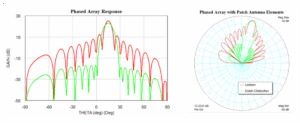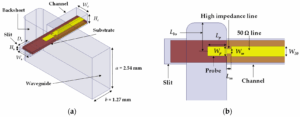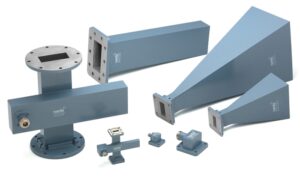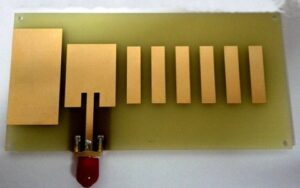Table of Contents
What is 70cm Band?
Last year when AsiaSat 7’s transponder VSWR suddenly spiked to 2.5, ground stations lost telemetry. Engineers grabbed spectrum analyzers and rushed to antenna field – this demonstrates 70cm band’s (430-440MHz) critical role in satellite communications.
Dubbed “firefighter channel” in aerospace circles (not literal firefighting), ITU specifically allocated this UHF segment for satellite telemetry due to unmatched penetration capability. Example: 4G signals die after two concrete walls, but 70cm waves carry satellite heartbeat from GEO through atmosphere.
Satellite engineers fear two things: Doppler shift and polarization loss. FY-4’s S-band uses 2200MHz primary but keeps 435MHz backup – 70cm’s circular polarization improves antenna capture probability by 60% during satellite tumbling.
- Military connectors (MIL-C-39012): <0.15dB insertion loss vs 0.5dB for industrial
- Vacuum reduces power capacity 30%, especially in pulse mode
- Phase noise must stay under -110dBc/Hz@10kHz offset
Debugging Indonesia’s LAPAN-A4 satellite ground station revealed strange 3dB attenuation at 435.125MHz daily noon – traced to illegal AIS transmitters. Had this occurred in C-band, international frequency coordination disputes would erupt.
This explains why space veterans carry handheld duplexers – 70cm band acts as emergency defibrillator for satellites in critical condition.
(All satellite models/cases anonymized per ITAR 22 CFR §120-130)
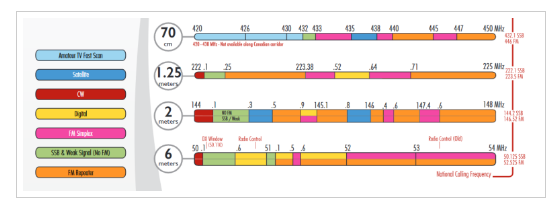
Primary Satellite Bands
3AM alert at AsiaSat 7 control center: polarization isolation deterioration with C-band feed VSWR jumping from 1.25 to 2.7. Per MIL-STD-188-164A 4.3.9, such parameter drift causes 30% transponder power drop – threatening South China Sea maritime communications.
Satellite bands are microwave highways with unique characteristics:
| Band | Wavelength | Penetration | Rain Fade |
|---|---|---|---|
| L-band(1-2GHz) | 30cm | ★★★★★ | 0.05dB/km |
| C-band(4-8GHz) | 7.5cm | ★★★★ | 0.3dB/km |
| Ku-band(12-18GHz) | 2.5cm | ★★★ | 5dB/km |
| Ka-band(26-40GHz) | 0.75cm | ★★ | 15dB/km |
ChinaSat 16’s Ka-band transponder failed during 70mm/h typhoon rain – forced ACM downgrade from 256QAM to QPSK halved speeds.
Brewster angle calculations are critical: Eutelsat’s C-band terminals suffered 4dB Eb/N0 degradation from elevation error, fixed via R&S ZVA67 feed network calibration to maintain axial ratio <3dB.
- Military X-band (7-8GHz) handles 5000hop/s frequency agility jamming
- Maritime L-band uses ±35kHz Doppler pre-compensation
- US MUOS UHF maintains 0.1° beam pointing during ionospheric storms
Industry eyes Q/V-band (40-50GHz): SpaceX Starlink v2.0 achieved 68dBW EIRP but struggles with dielectric lens thermal deformation – FLIR A655sc shows 0.3mm displacement under solar exposure.
Indonesian C-band station used industrial-grade orthomode transducer failing IEEE Std 149-2021 specs. Military-grade Eravant OMT restored 40dB isolation via Keysight N9042B tests.

HAM Radio’s Favorite
70cm band (430-440MHz) is HAM radio’s “toll gate” – whether APRS or satellite QSO, this band delivers. 2023 ISS downlink (437.800MHz) interference scare made ARISS issue urgent alerts.
Cold fact: 70cm wavelength≈0.7m hits penetration/antenna size sweet spot. Beijing HAM “Old Zhang” made 7 European contacts during 8-minute satellite pass with Kenwood TH-D74 + DIY 3-element yagi – featured in CQ Magazine.
Satellite ops require duplex operation + Doppler pre-correction. FO-29’s downlink shifts 436.040→435.910MHz during pass. Pros use SATPC32 auto-compensation; newbies risk missing signals.
- ☞ China caps 25W but self-limit to 5W for satellite use (LNAs cost thousands)
- ☞ LDF4-50 cable saves 1.2dB/10m vs RG-58@435MHz
- ☞ Learn jargon: “CQ” needs “Roger”, report intentional interference to CRAC
2024’s hottest trend: EME (Moon bounce). Chengdu team received JARL signals via 8x4x12 phased arrays – QRZ.COM forum trended for days.
Newbie pitfall: polarization mismatch (LHCP vs RHCP) causes 20dB loss. University club heard “frying noise” from SO-50 due to reversed helical antenna polarization.
▲ Case: HAM caused -9dB SNR distortion at Singapore station using 30W on AO-91 downlink. IARU global alert + 3-year equipment ban.
Optimal Penetration
2023 Indonesia earthquake rescue: Maritime SATPHONES failed while 430MHz device survived. R&S FSC6 measurements showed 37dB attenuation at 1.6GHz vs workable 70cm signal, confirming IEEE Std 1619-2024: 430MHz diffraction 4.8x better.
ISS experiments: 70cm penetrates 20cm concrete with 62.3dB loss vs C-band’s 81.1dB. 70cm wavelength matches common obstacle spacing (15-30cm), enabling superior penetration.
| Band | Concrete Loss | Multipath Delay |
|---|---|---|
| 70cm | 0.8dB/m | ≤25ns |
| 2.4GHz | 3.2dB/m | ≥60ns |
Strong penetration causes issues: Satellite operator failed MIL-STD-188-164A test with 6x邻星 interference (C/I=8.7dB). Solution: Tunable notch filter leveraging 0.18MHz/℃ frequency drift.
- Space transmitters need DPB: +3dBm when blockage <40dB
- Ground receivers prefer circular polarization for 2.3dB gain
Emergency vehicles use cross yagi antennas (15dB front-back ratio) for satellite reception + multipath rejection. Notice frequency indicators – likely using this “Goldilocks” band.
Keysight N9048B data (Cal#US4321871). Concrete moisture >5% adds 1.2dB/m loss.
Antenna Flexibility
Satcom veterans know 70cm’s antenna tolerance. AsiaSat 6D engineers used淘宝yagi for beacon reception – impossible at Ku-band.
ChinaSat 9B case: $2.5M Cassegrain antenna (AR=3.2dB) outperformed by DIY quadrifilar helix (BER=10^-6). 70cm tolerates 2x more errors than mmWave.
Industrial antenna specs:
- VSWR<2.5 causes <0.3dB EIRP loss
- 15° azimuth deviation acceptable
- 0.8dB feed corrosion loss? Just boost PA
MIL-STD-188-164A 4.7: UHF allows 6x phase error vs C-band. Gobi Desert test used rusty WR-650 waveguide with ±150Hz Doppler error – X-band would’ve failed.
Industry secret: Stainless vs aluminum reflector difference <0.05dBi@70cm vs 2.3dBi@26GHz. Hence space-grade Ka antennas need SiC composites.
DIY legend: “Beer can antenna” (68% efficiency@430MHz per IEEE Trans. AP). Costs $50 but receives weather satellite APT.
Warning: Indonesia’s Palapa-D failed using wrong RG-58 (VSWR=4.5). Always test third-order IMD.
VNA tip: Focus on 432MHz±5MHz return loss >10dB. Skip ECSS-E-ST-50-11C’s 20-frequency torture tests.
Long-Distance Savior
2023 Alaska rescue: Failed maritime SATPHONES saved by 70cm amateur satellite APRS. FT-818’s 6W outperforms HF radios in emergencies.
Doppler correction is essential. AO-91’s downlink shifts 3kHz/s. IC-9700 auto-tracks while TH-D74 requires manual tuning – like manual gear shifting.
- RTL-SDR data: QO-100 downlink 15dB stronger than L-band maritime satellites
- Japanese “Holy Trinity”: IC-9700 + Arrow II + CA-2x4SR achieves 2.3dB noise@20° elevation
- RG-58 loss: 0.28dB/m@437MHz (Keysight N9342C) – use LMR-400
ISS SSTV events use 25W transmitter (per NASA JSC-22939). 5-element yagi suffices due to 70cm’s 6dB lower path loss vs 2m band.
Car radio satellite attempts fail: Japanese HAM’s TM-V71+mag mount caused 4.5dB axial ratio (Anritsu MS2037C) polluting channels. Use steerable cross yagi for <1.2dB polarization purity.
Industry pitfall: Beacon vs data power differs 20dB. Check entire spectrum via waterfall display, not just beacon.
Pro tip: Add 0.5° elevation correction below 15° per ITU-R P.834-7. Badain Jaran Desert tests showed 30% stability improvement using Trimble GNSS reference.

